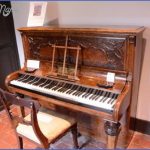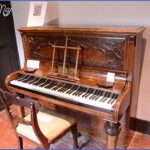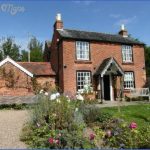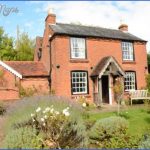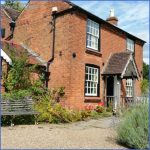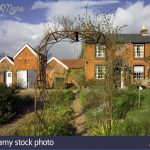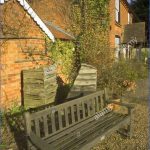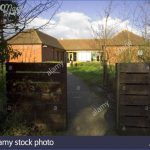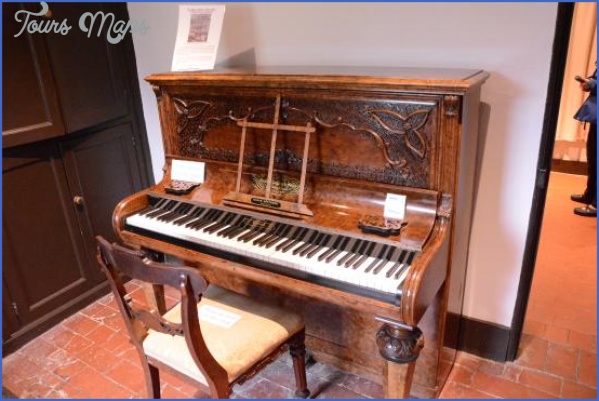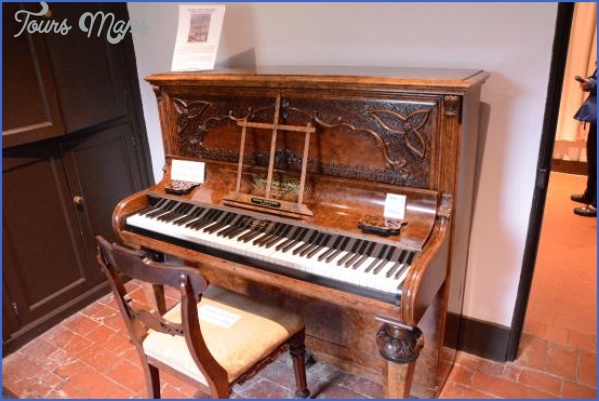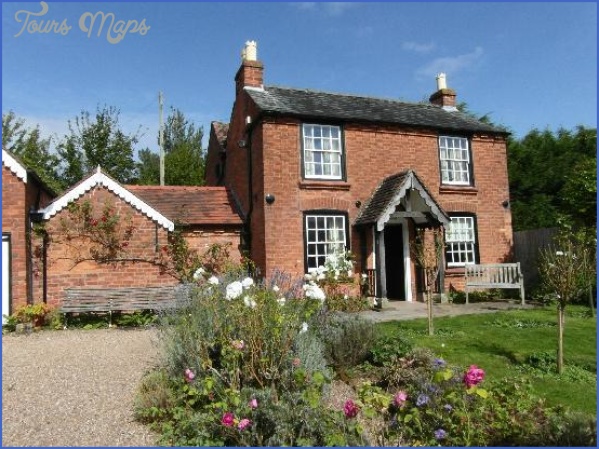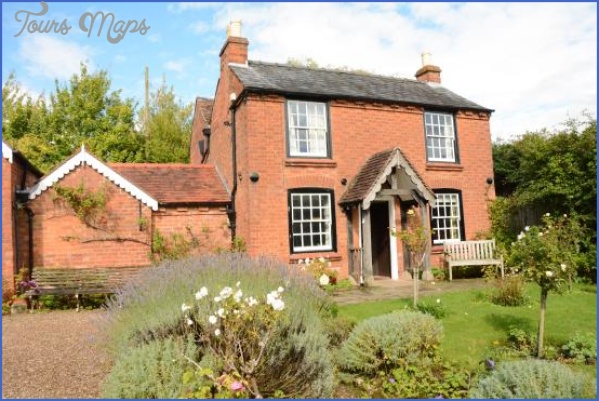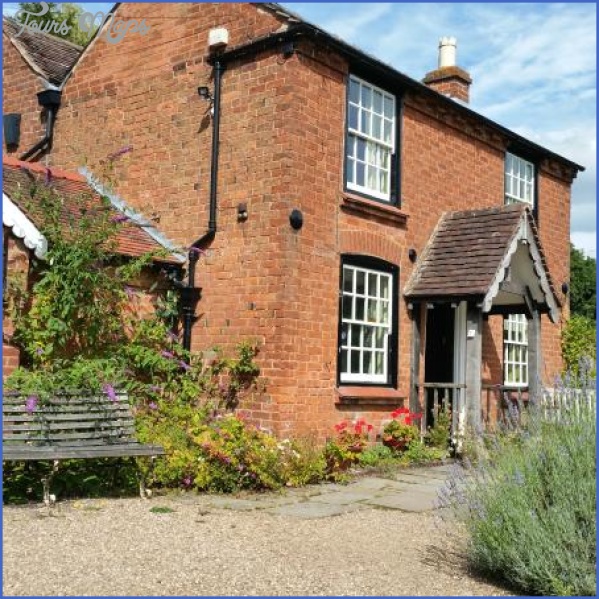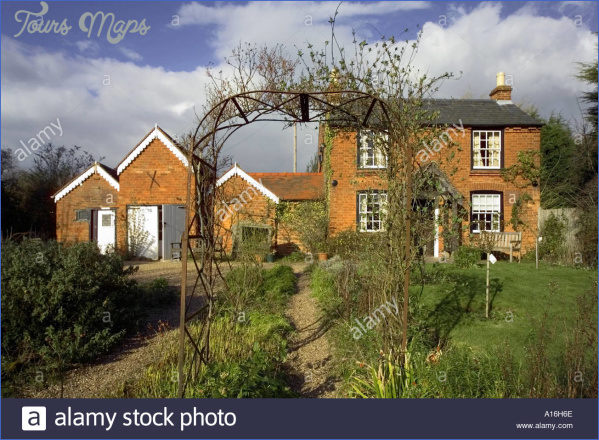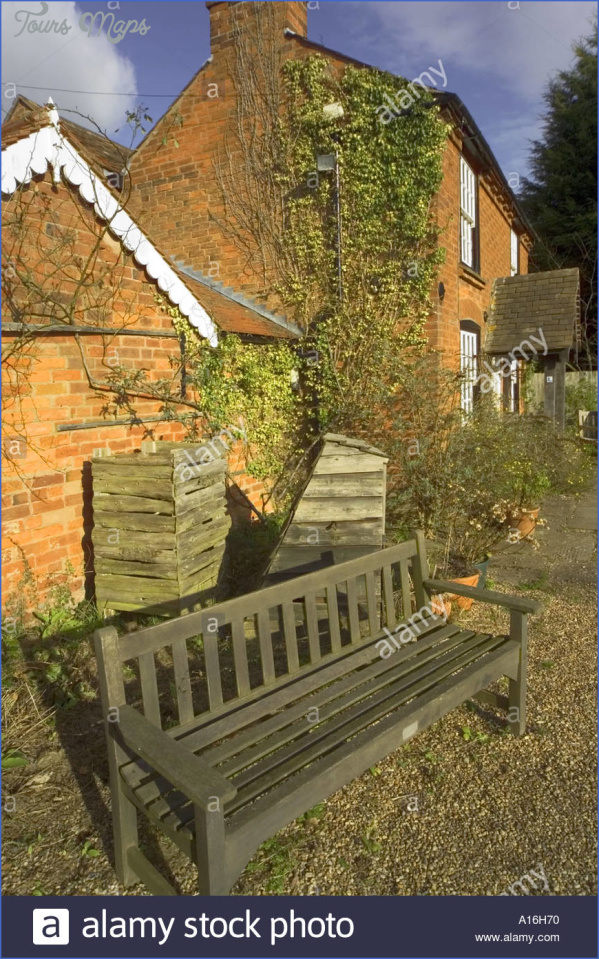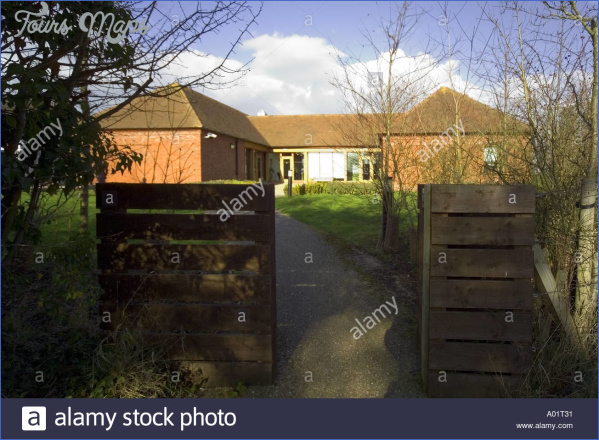ELGAR MUSEUM
Discovering Edward Elgar’s birthplace, at Lower Broadheath, just outside Worcester, is an adventure in itself. It can also, with the help of the delightful ‘Elgar Route’ signs and a brochure (from the Worcester City and Malvern Hill District Councils), be the first stop on a unique musical pilgrimage, between Worcester and Great Malvern, among 48 related sites. Although Elgar lived at Firs for only two years after his birth on 2 June 1857, he remained deeply attached to the area all his life.
As a boy growing up in Worcester, he spent his holidays in Lower Broadheath, on a nearby farm; as a man he returned again and again to the Malvern Hills for inspiration. He rented Birchwood Lodge in Storridge, a small summer cottage, from 1898 until 1903, scoring The Dream of Gerontius and composing Caractacus there. Then he lived near Hereford, at Plas Gwyn, until he moved to London in 1911. As a widower, he lived at Napelton Grange in Kempsey from 1923 until 1927 (he was there when in 1924 he was appointed Master of the King’s Musick). His last home was Marl Bank, in Worcester. When in 1931 the piano tuner’s son was ennobled, he chose the title ‘First Baronet . . . of Broadheath’; in 1934 he was buried next to his wife at St Wulstan’s Church, Little Malvern. It was one of his last wishes that the redbrick cottage should become his official memorial.
After Elgar’s death his daughter, Carice, was eager to see the cottage set up as a memorial, and the next year Worcester Corporation bought the building. But the appeal for funds to establish and run a museum had a poor response, and for nearly 30 years it was run by a trust on a shoestring budget, mostly with resident custodians opening it to callers by request. A collection was gradually assembled, mostly from Carice but also from other family members
Firs, Elgar’s birthplace at Lower Broadheath and friends. In the early 1960s the situation worsened as the fabric deteriorated and the longstanding custodian departed. Renovations began in 1965 and two years later an appeal was launched, the first of a continuing series as the museum developed, with increasing facilities both for visitors and display and for scholars wanting to work on the Elgar material that the museum possessed (most of the manuscripts had gone to the British Museum after Carice’s death in 1970, when much of the family furniture was disposed of by auction).
ELGAR MUSEUM Photo Gallery
To cross the threshold of the cottage itself, however, is to step directly into Elgar’s world, so rich is the collection in original material. One of the ground-floor rooms is devoted to pictures of the Elgar family (there is also a piano, sold by Elgar Brothers’ Music Shop); opposite is a reconstruction of Elgar’s study, with his desk (with paper, his glasses, his inkwell and a manuscript ruler), some of his books, his gramophone and a wooden music stand. In the rear room – the Atkins Room, after his godson E. Wulstan Atkins – there is a glass case with his ceremonial court clothes, the quill pen with which he signed his acceptance of the Freedom of Worcester and a display related to his childhood and linked with his Wand of Youth music.
The rooms are small and the upstairs ones, in particular, are crowded with evocative exhibits. In the rear room, supposedly the room of his birth, are pictures of his parents, a family tree, his father’s advertisements as a piano tuner, his birth certificate, his watches, quill sharpener and snuffbox, and concert handbills and tickets. There are some of his own drawings made for his wife and daughter. The left front room holds more of his library, a games table, some examples of his own woodwork (penholders, ‘pokerwork’), his golf clubs, an inlaid ^olian harp made specially for him, relics from his chemical laboratory at Plas Gwyn, his microscope and a selection of press cuttings and concert handbills. In the room opposite are pictures of Elgar with such colleagues as Richard
Strauss, the boy Yehudi Menuhin, and Henry Wood, another ^olian harp, which he made himself, and a glass case with a display covering his travels (in Europe, the USA, the Mediterranean, South America; also coral he collected, postcards he sent – and a press report of a car accident he was involved in). The museum has a delightfully bewildering variety and abundance – cycling maps, crossword puzzles, scrapbooks, drawings, music proofs, concert posters and programmes, awards and honorary degrees, his violin. Visitors come away with a strong sense of the composer and the kind of man he was.
Then, adjoining, is the Elgar Centre, opened by Janet Baker in 2000. It has a reception area and a gift shop, and an impressive main display room. If the cottage deals with Elgar the man, this deals with Elgar the composer. One substantial item is the nameplate of a locomotive named after him in his centenary year, 1957. But for the most part this is about the music and its performance, with special displays on the Enigma Variations and the characters portrayed within, with listening facilities (to Elgar’s own recording), and on the famous Violin Concerto recording with the young Menuhin. Another display concerns ‘A Musical Marriage’, with his settings of his wife Alice’s poetry. Adjoining is the Carice Elgar Room, a multi-purpose room, seating about 60, with theatrical lighting, suitable for music, lectures or demonstrations. Outside is a summerhouse, originally in the garden at Marl Bank and given to the birthplace in 1982.
In 1981 the Prince of Wales, patron of the Elgar Foundation since 1974, unveiled a statue of Elgar in Worcester, facing the Cathedral at the end of the High Street. Many Elgar places of pilgrimage have already disappeared, but commemorations of the composer abound, for example the plaque at 10 High Street, Worcester, once the Elgar Brothers’ Music Shop (the family lived upstairs) and now a department store, and Elgar Court (on the site of Marl
Bank, Rainbow Hill, Worcester, where he died on 23 February 1934).
A plaque identifies the house at 51 Avonmore Road, London W14, where the Elgars lived in 1890-91, and another marks the site of Severn House (the panelled house with music room designed by Norman Shaw) at 42 Netherhall Gardens, London NW3, which Elgar bought at the end of 1911. The house at 37 St James’s Place, London SW1, where he lived after his wife’s death, is now a hotel.
Maybe You Like Them Too
- Top 10 Islands You Can Buy
- Top 10 Underrated Asian Cities 2023
- Top 10 Reasons Upsizing Will Be a Huge Travel Trend
- Top 10 Scuba Diving Destinations
- World’s 10 Best Places To Visit

